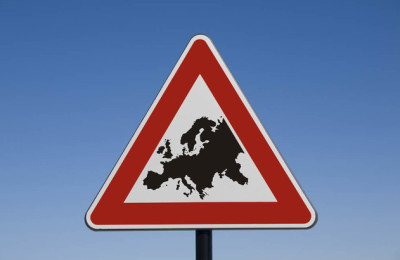
David Worsfold
European insurers look to be winning their battle to retain the current structure of regulatory authorities in Europe in the face of pressure to merge the banking and insurance regulators. The European Commission has been reviewing the regulatory structure and institutions it created following the widely accepted failure of regulation during the financial crisis that crippled the global financial system a decade ago.
This led to the European System of Financial Supervision which was set up in November 2010 following the recommendations of a group of high-level experts led by Jacques de Larosière. It currently consists of: • The three European Supervisory Agencies (ESAs) which supervise individual sectors and institutions (the micro-prudential pillar).
The ESAs are the European Banking Authority (EBA), the European Insurance and Occupational Pensions Authority (EIOPA) and the European Securities and Markets Authority (ESMA). • The European Systemic Risk Board (ESRB), which oversees the financial system as a whole and co-ordinates EU policies for financial stability (the macro-prudential pillar). Brexit provided the catalyst for a review of this system with a potential merger of EIOPA and the EBA high on the agenda. This so-called “twin peaks” regulatory model with a strengthened ESMA and a merged banking and insurance regulator has been quietly favoured by some senior Commission officials for some time.
The post-Brexit need to relocate the EBA from its current London base ensured the idea gathered fresh momentum. There are currently 27 offers from the member states to give the EBA a new home and the Commission has promised a decision next month. Ahead of that, however, it appears to have ruled out a merger with EIOPA. This was being pressed hard by officials in Frankfurt, one of the leading contenders for the location of the new EBA HQ and where EIOPA is currently headquartered. The merger proposal was bluntly rejected by European insurers, who have fought hard against previous proposals to merge their regulator with the bank watchdog, fearing a harsher regime less sympathetic to the special needs of Europe’s complex insurance sector. It appears they are winning that battle.
A Commission statement on the progress towards Capital Markets Union at the end of September outlined some major new powers for the ESMA but largely leaves EIOPA and the EBA as they are. It says EIOPA will have a stronger role in promoting convergence in the validation of internal models that insurance companies use to calculate solvency requirements: “This will help overcome fragmentation and ensure better and more integrated supervision of the large cross-border insurance groups”, said the Commission.
It went on to explain the reasons for the additional powers: “Despite ongoing work by EIOPA on supervisory convergence in internal models, major inconsistencies remain in the requirements of national competent authorities for internal models across the EU. Divergence in the supervision and approval of internal models may lead to inconsistencies, and creates an unlevel playing field. Today's proposal will enhance supervisory convergence by setting out in further detail EIOPA's role with regard to internal models through: provisions on cooperation; information sharing; clear powers for EIOPA to adopt opinions and guidelines in this area, and to contribute to dispute settlement.
“Furthermore, EIOPA will set EU-wide priorities for supervision in the form of a 'Strategic Supervisory Plan' against which all competent authorities will be assessed. Competent authorities will be required to draw up annual work programmes in line with the Strategic Plan. This means EIOPA will be able to ensure convergence with respect to the prudential supervision of insurers who are primarily active in Member States other than where they are established and supervised”. The announcement that the regulatory merger was off the table was immediately welcomed by Insurance Europe, the pan-European trade body for insurance companies.
“Insurance Europe welcomes the Commission’s decision to maintain a single, stand-alone insurance supervisor with appropriate expertise in the form of the European Insurance and Occupational Pensions Authority” said Michaela Koller, director general of Insurance Europe. Another theme in the Commission’s broader reform agenda has been the development of tougher, more consistent regulation of conduct. This is currently very patchy across the EU. There have been calls for the EU to adopt the UK model of separate prudential and conduct regulators, an option not favoured by IE and now rejected by the Commission.
“Insurance Europe also welcomes the fact that EIOPA will continue to oversee both prudential and conduct of business issues for insurers. This is the best way to avoid duplicative and/or contradictory rules being developed by two separate ESAs”, said Koller. Insurers are not entirely relaxed about the Commission’s stance as it is proposing an extension of EIOPA’s powers, something that needs to be approached with caution, said Koller.
“However, points that require further analysis are the proposals for material increases in both EIOPA’s scope of activities and the role of the chairperson; in particular, to assess if these would be balanced by appropriate governance and oversight mechanisms. It is also important, alongside the focus on sustainability, to ensure that EIOPA takes into account the impact of its work on economic growth, product availability and innovation to meet the objectives of better regulation.”
Insurers in the UK will be watching these developments carefully as they want to see the Prudential Regulation Authority retain its status as a “competent authority” after Brexit to ensure that easy cross-border trade – and the regulatory equivalence that will make that possible – is sustained for as long as possible after the UK leaves the EU. Of course, how likely that is to be achieved depends largely on what can be rescued from the current stalled, fractious political negotiations.
